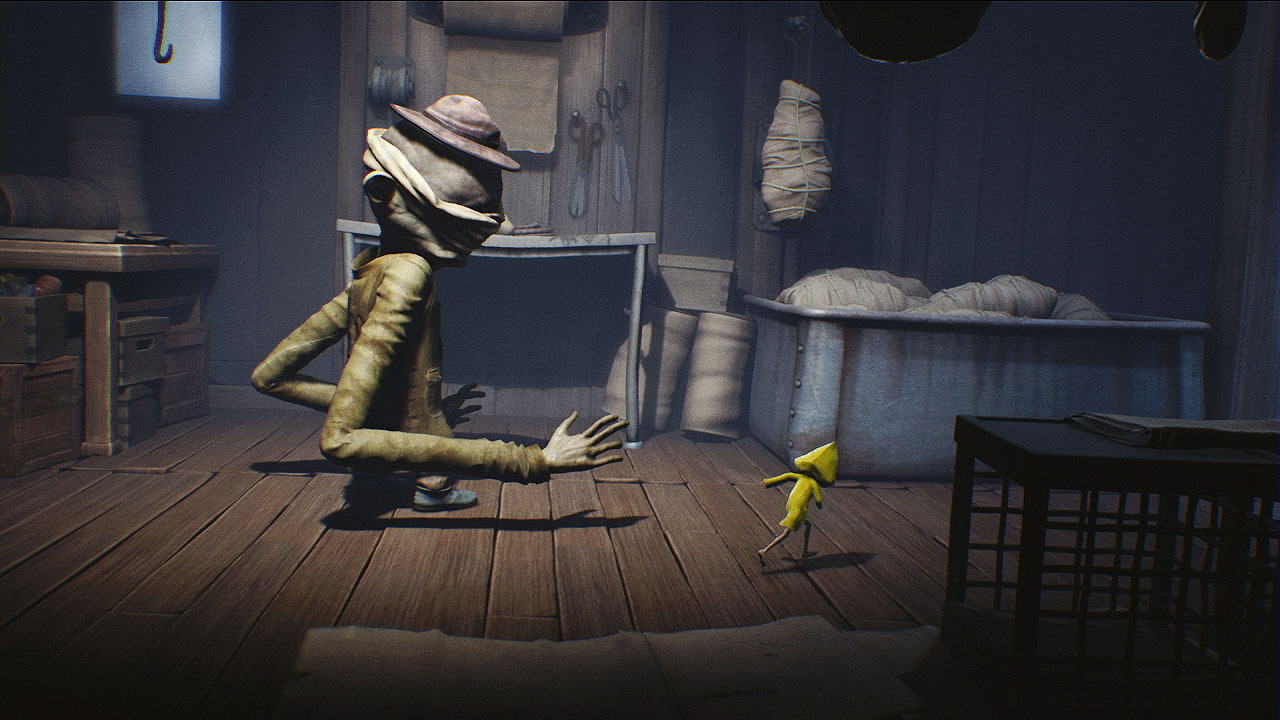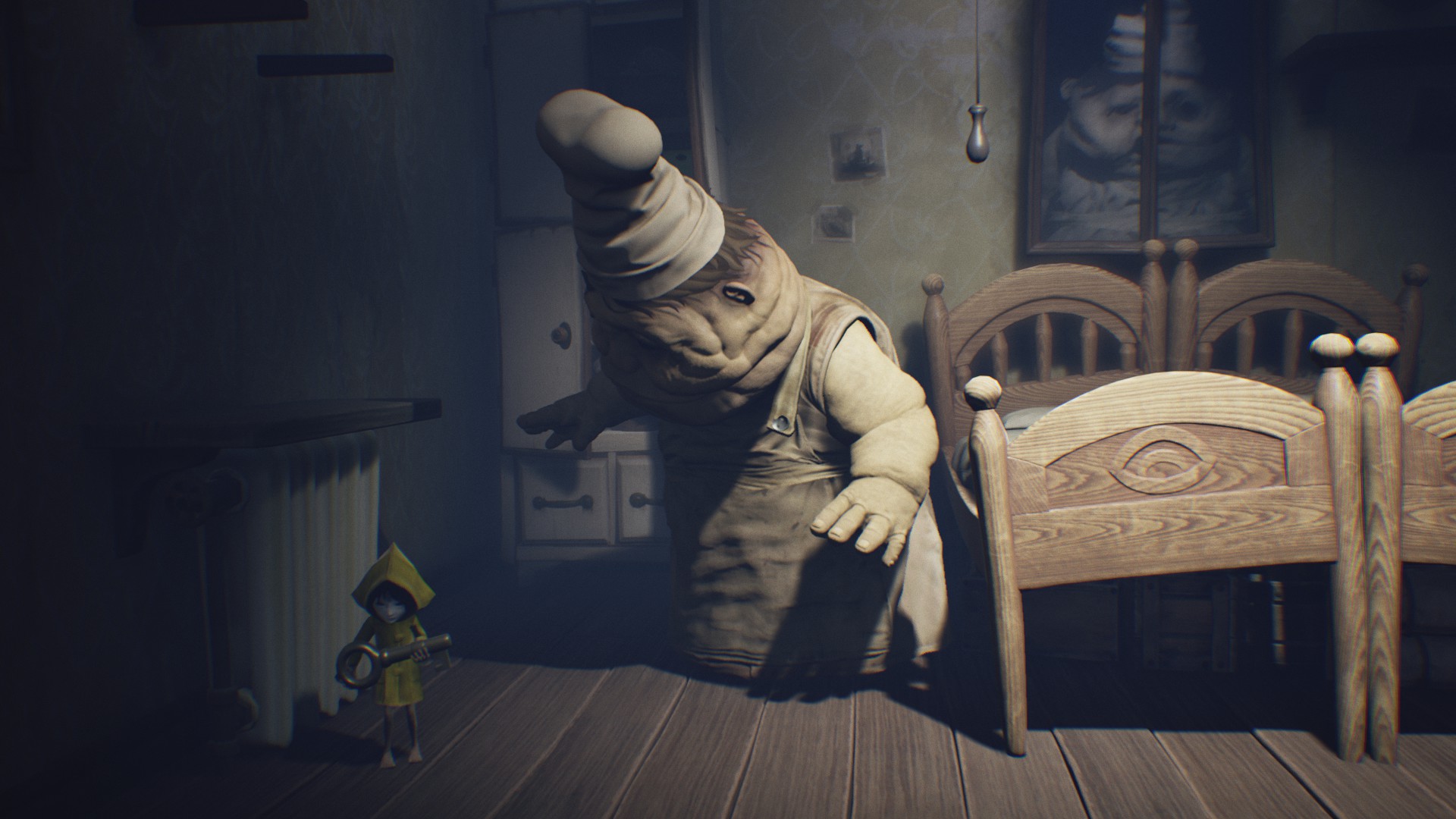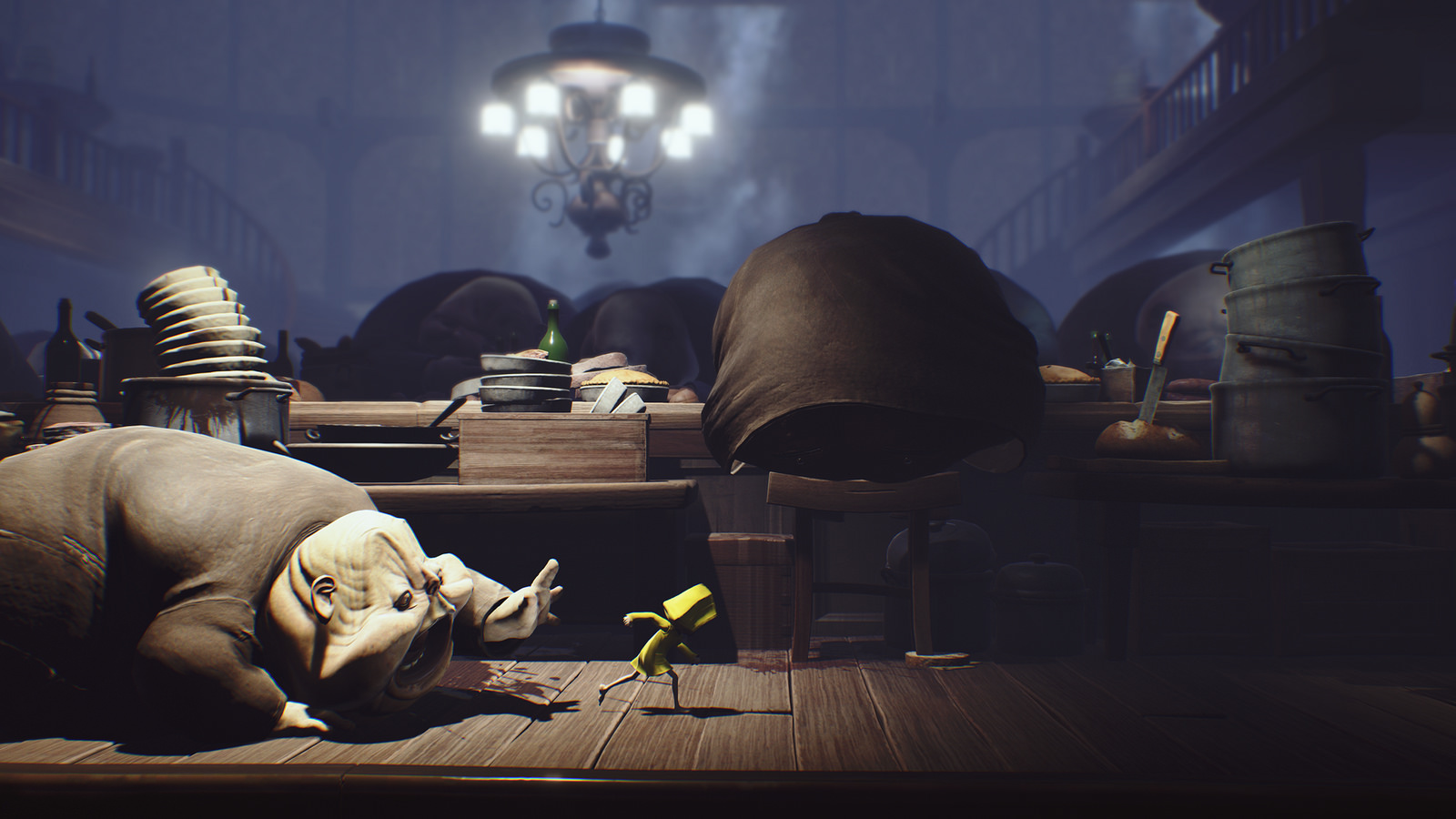Level and Puzzle Design in Little Nightmares

The blind long-armed janitor.
A QUICK OVERVIEW
While playing Little Nightmares, I was pleasantly surprised by the punishing yet seamlessly integrated puzzles found throughout the game. The variety of characters, their gameplay, and levels were designed to fit both mechanically and narratively to the overall atmosphere of Little Nightmares.
LEVEL DESIGN
Within Little Nightmares, there are five distinct levels, each with their own unique enemy type and necessary mechanics. For example, the long-armed janitor is blind, but you'll quickly learn that creaking floorboards will give you away, requiring you to stay on cloth. The chef, on the other hand, is oblivious to most noise, but stay hidden under furniture or he might spot you. At first, the game will show the enemy in a nonconfrontational manner, to build fear and tension, before being thrown into a room where you must figure out how the enemy's mechanics operate or risk death. Next, you are put through increasingly difficult trials to test you on these learnt mechanics, with brief safe areas between them, until reaching a climactic "boss battle." This structure creates a perfect tension-time graph that is so vital to engagement, challenge, and pacing in video games.
Each level's puzzle-like trials are also designed specifically with the enemy of that section in mind. For the janitor, the level is cluttered with potential noise making objects that must be avoided so that he cannot hear you. There are puzzles that include attempting to move soundlessly through a pile of shoes, turning on a television to lure him, riding painfully noisy elevators, prepared to run when the doors open. On the other hand, the chef's level design is entirely opposite, with wide-open spacious rooms that make it difficult to find a hiding place. The challenges of this area are activities such as stealing keys from a sleeping chef, keeping track of the routines of multiple enemies, and sneaking between largely interconnected rooms. Both thematically and mechanically, every challenge makes sense with the character that inhabits it. No puzzle in Little Nightmares feels like it was placed there simply because it's a video game that needed challenging gameplay, but instead they emerge organically out of the setting and enemy types.

Never steal from a sleeping chef.
PUZZLE DESIGN
There's another major difference in the way the puzzles in Little Nightmares work compared to other games of the genre such as Limbo or Inside. Despite being horror in nature, almost every death in Little Nightmares was foreseeable and felt like it was due to my own mistake. In Inside, many of the puzzles felt like trial-and-error, and required memorizing a path and precise movements to execute. For example, there are moments when your character will trip over a branch or a truck will pull up from the background, and it is nearly impossible to predict without having died to it first. Several reviewers such as Errant Signal and Joseph Anderson have great videos pointing out the problems with this type of design. While Little Nightmares certainly takes inspiration from those games, it is different in that it can be beaten the first time without dying once. The enemies have consistent mechanics that are never unpredictable, and impending danger is heavily telegraphed with visual animations and intensifying music. Importantly, when you do mess up and are spotted, you have the chance to escape by running or hiding rather than instantly dying. Even in chase sequences or fast-paced cinematic set piece moments, danger is always telegraphed far enough in advance for the player to react accordingly. This allows the player to not have to repeat these moments, causing them to lose all tension, and makes it feel all the more epic when you pull it off. The responsibility that the player holds for death makes the game punishing yet fair, since you are actively controlling the protagonist rather than the game predetermining everything.

One of the disturbing chase sequences in the game.
IN CONCLUSION
The design of Little Nightmares works flawlessly together to build a challenging, fun, narrative experience. With unique monsters that each have their own mechanics to master, levels and puzzles built around those enemy types, and consistent telegraphing of any danger, the game gives the player responsibility. Little Nightmares remains a successful example of how cinematic games can utilize great game design to enhance their experience.
Until next time, Tabea